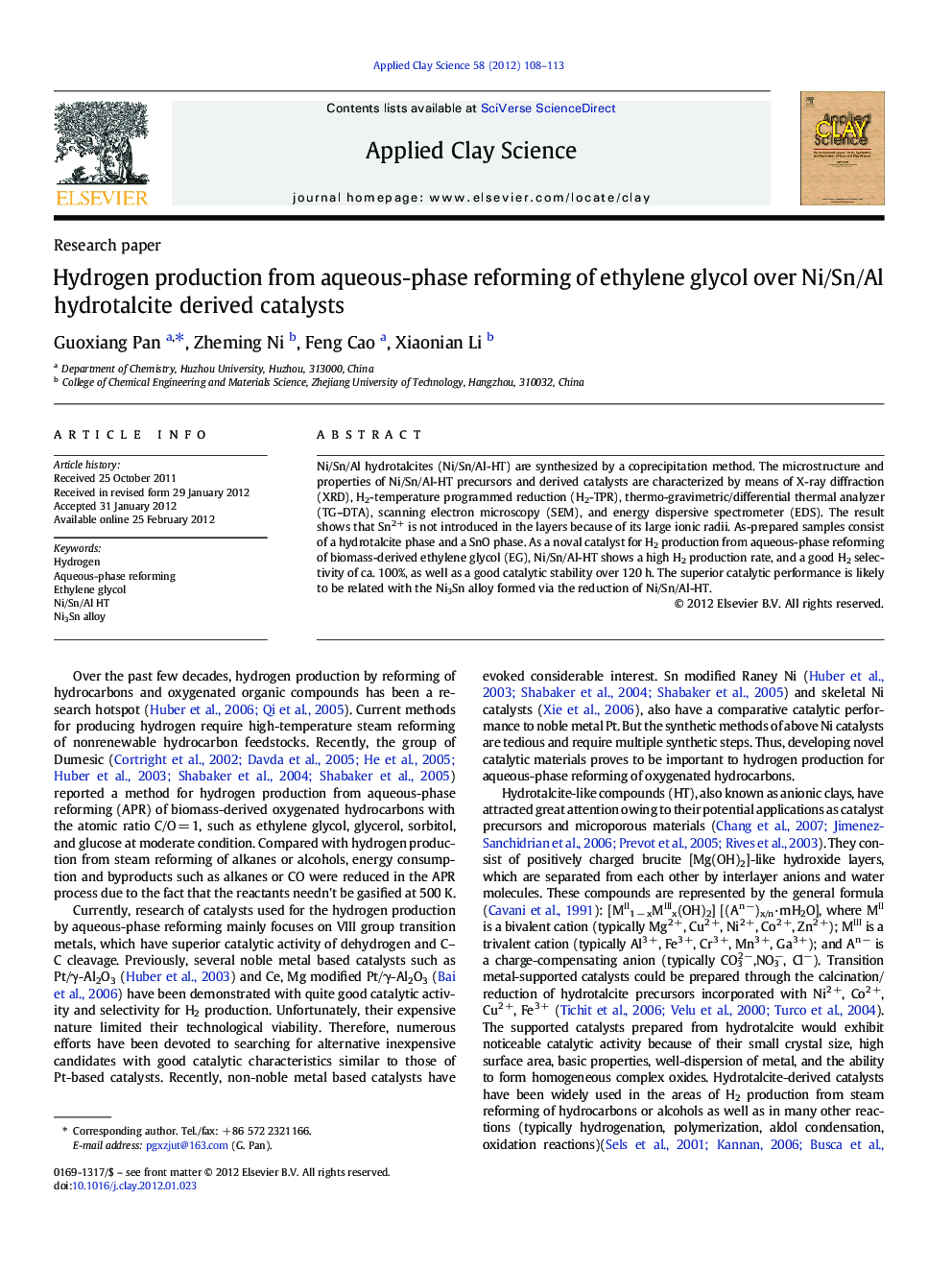| Article ID | Journal | Published Year | Pages | File Type |
|---|---|---|---|---|
| 1695310 | Applied Clay Science | 2012 | 6 Pages |
Ni/Sn/Al hydrotalcites (Ni/Sn/Al-HT) are synthesized by a coprecipitation method. The microstructure and properties of Ni/Sn/Al-HT precursors and derived catalysts are characterized by means of X-ray diffraction (XRD), H2-temperature programmed reduction (H2-TPR), thermo-gravimetric/differential thermal analyzer (TG–DTA), scanning electron microscopy (SEM), and energy dispersive spectrometer (EDS). The result shows that Sn2+ is not introduced in the layers because of its large ionic radii. As-prepared samples consist of a hydrotalcite phase and a SnO phase. As a noval catalyst for H2 production from aqueous-phase reforming of biomass-derived ethylene glycol (EG), Ni/Sn/Al-HT shows a high H2 production rate, and a good H2 selectivity of ca. 100%, as well as a good catalytic stability over 120 h. The superior catalytic performance is likely to be related with the Ni3Sn alloy formed via the reduction of Ni/Sn/Al-HT.
► Ni/Sn/Al hydrotalcites are successfully synthesized by a coprecipitation method. ► Ni/Sn/Al-HT shows a good H2 production performance from APR of ethylene glycol. ► The superior catalytic performance is likely to be related with the Ni3Sn alloy.
